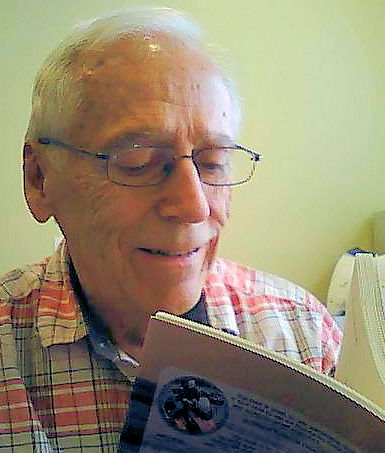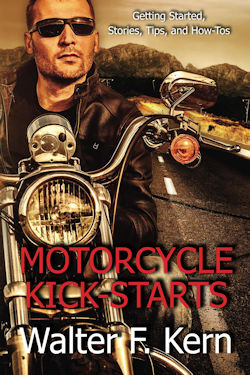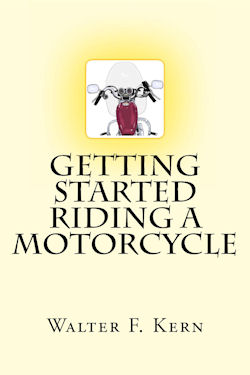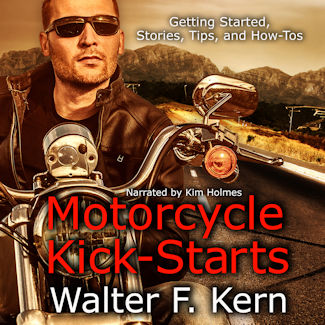Buy a Motorcycle - Learn the Steps - Part 2
By Walter F. Kern
Part 2: Buy a New Motorcycle
Buy from the Internet
Just as you're doing right now, it's a good thing to use the Internet to do research when you want to buy a new motorcycle. You can check out the manufacturers' Web sites, look for dealer Web sites, read road test reviews, participate in forum discussions about motorcycles you're interested in, chat in chat rooms, check dealer invoice prices, etc. You may even find dealers who will sell a motorcycle to you on the Web.
However, my personal opinion is that you should buy a new motorcycle from a dealer in a face-to-face situation. Even though you can save a few bucks by buying a bike 200 miles away, there is nothing like having a dealer close to your house with whom you can establish a working relationship.
Buy from a dealer
Here are some tips on buying a new motorcycle from a dealer. If you are buying certain models that are in high demand, you may find dealers unwilling to budge on price. Some may even charge a premium over the MSRP for the bike.
Harley-Davidson dealers also have a product in great demand. They tend to fall into two camps:
- Sell way over MSRP with short or no waiting period
- Sell close to MSRP with a long waiting period
The following buying tips may not work too well with motorcycles in high demand. If you want such a bike, you may have to shop around more and expect to pay a higher price than you would with other bikes.
- Know what you want. Your motorcycle should fit your needs and you should look around and compare as much as possible before going in to see the dealer.
- Do your homework. Understand what you want and talk to the salesperson about several different bikes that meet your needs. If you have narrowed your choice down to a couple of bikes, do the homework on all of the bikes.
- What do I mean by homework? Well, find out the dealer invoice price (this tells you how much the dealer pays for the motorcycle). Use an online service such as CycleBuy.com to obtain a report on each bike. This report also tells how much the list price is (you can also go to the official Web site for the motorcycle manufacturer to get the list price). By getting the amount that the dealer pays for the motorcycle, you know his "ready to sell price." This tells you his automatic profit margin percentage. This should come out to be 10% - 15%. The dealer will do his best to make 10% total profit on the motorcycle.
- All dealerships will include certain fees with the sale of the motorcycle. Most common fees are destination charges, setup fees, documentation fees, taxes, and maybe an assembly fee. The dealership also makes a profit on all these fees. There is no immediate way to find out their profit margin on these items but it should be between 5% - 15%.
- The salesperson will also try to sell you motorcycle extras, for example, an extended warranty and accessories. The dealership makes a little on these too. These are specifically choice-driven. If you want it, you buy it.
- As for trade-ins, do your homework here too. You can go to www.kbb.com (Kelly Blue Book) and find out the price of the vehicle either selling it outright or trading it in. The dealer will probably offer something under the blue book value of the motorcycle. You should also haggle about this too. Decide what's best for you. Do you want to make a few hundred dollars more and have to deal with the hassle of selling it yourself or do you just want to trade it in and not deal with all of the hassles.
- Next comes the negotiation. If you have decided on your bike and you have done your homework beforehand, you'll be ready to negotiate. In my opinion, a dealership has a goal of making about 10% profit on each deal. This means you may be able to talk them down substantially. It also helps if you buy an earlier model left-over new motorcycle. They want to free up the floor space and will be ready to deal. The longer it sits, the more it costs them and you will be helping to get older inventory out the door.
- What about paying for the motorcycle? Most dealers are cash driven. Money in hand is the best form of tender there is. If you cannot pay cash, at least try to put down a big chunk of change. If financing, the larger the down payment, the less the monthly payments and the less interest you will pay. If you can, get a pre-approved loan from a lending institution so financing will not be a consideration. Often dealers will have special low-percentage loans available for certain models. These deals may influence your decision.
- As for getting the most for your current bike, your best move is to sell it privately rather than using it as a trade-in. Try to sell it before you buy the new motorcycle. In addition to the obvious financial benefit you'll derive from having only one motorcycle at a time to insure, maintain, etc., you won't feel pressure to come down on the price in order to sell your current ride quickly so you can meet a payment on the new bike.
Next page > Closing the Deal
Go Back > Buy a Used Motorcycle
|
|
| |
| |
|
|
|
Click Picture for Walter F. Kern's
Kindle, Paperback, and Audible
Books
|
More about motorcycles
|
|













